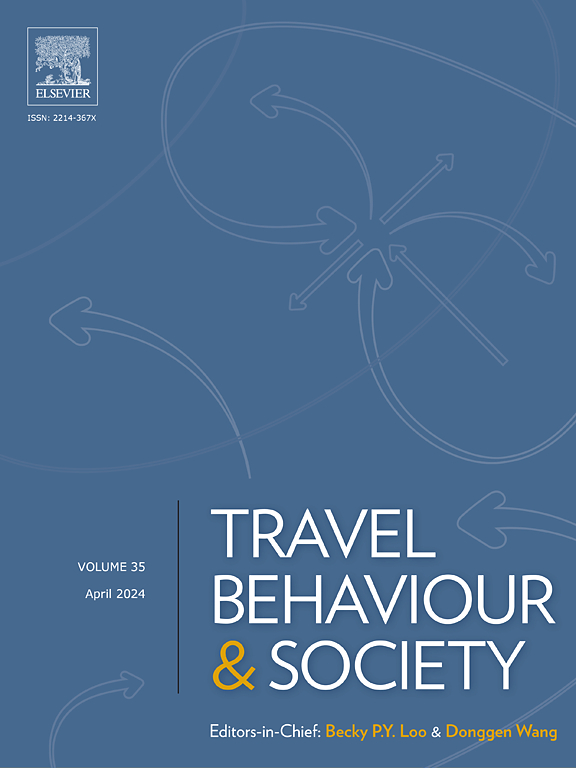激励措施如何影响乘客乘坐公共交通工具的意愿:对不同城市出行方式转变的分析
IF 5.1
2区 工程技术
Q1 TRANSPORTATION
引用次数: 0
摘要
根据个人偏好量身定制的激励战略可以激励通勤者采用公共交通,从而缓解道路拥堵,促进生态友好型城市出行。然而,由于调查参与度低和某些同质性假设,我们对不同城市中个人使用公共交通偏好的了解受到限制,因此要了解人们对这些激励措施的不同反应具有挑战性。为了解决这个问题,我们的研究采用了潜类选择模型和混合对数模型来分析个人对激励措施的反应,并找出影响这些激励措施有效性的关键因素。用于分析的数据来自一个移动导航应用程序,覆盖中国 34 个城市,从而能够对每个潜类中的个体进行分析,揭示他们在不同城市中使用公共交通的不同偏好。我们的研究结果表明,个体对激励措施的反应存在明显差异,主要分为三个潜在类别:第一类个体受激励措施的影响极小;第二类个体对激励措施的反应适中,尤其是对食品和购物券的反应;第三类个体的决策受教育水平、性别和出行方式偏好的影响较大,对激励措施的反应程度较高。这些见解对决策者设计更有效、更有针对性的激励方案以鼓励采用公共交通非常有价值。本文章由计算机程序翻译,如有差异,请以英文原文为准。
How incentives affect commuter willingness for public transport: Analysis of travel mode shift across various cities
Incentive-based strategies tailored to individual preferences can motivate commuters to adopt public transit, potentially easing road congestion and fostering ecofriendly urban travel. However, understanding diverse responses to these incentives has been challenging due to low survey participation and certain homogeneity assumptions, limiting our knowledge of individuals’ preferences for using public transit in different cities. To address this, our study employs a latent class choice model and mixed logit model to analyze individual responses to incentives and identify key factors that influence the effectiveness of these incentives. Data for this analysis was sourced from a mobile navigation application, covering 34 cities within China, thereby enabling the analysis of individuals within each latent class to reveal their diverse preferences for using public transit within different cities. Our findings indicate significant individual differences in response to incentives, categorized into three main latent classes: Class 1 individuals exhibit minimal influence from incentives; those in Class 2 demonstrate moderate responsiveness, especially to food and shopping coupons; and Class 3 individuals, whose decision-making is significantly affected by education level, gender, and travel mode preference, show a high degree of responsiveness to incentives. These insights are invaluable for policymakers seeking to design more effective, tailored incentive schemes to encourage public transit adoption.
求助全文
通过发布文献求助,成功后即可免费获取论文全文。
去求助
来源期刊

Travel Behaviour and Society
TRANSPORTATION-
CiteScore
9.80
自引率
7.70%
发文量
109
期刊介绍:
Travel Behaviour and Society is an interdisciplinary journal publishing high-quality original papers which report leading edge research in theories, methodologies and applications concerning transportation issues and challenges which involve the social and spatial dimensions. In particular, it provides a discussion forum for major research in travel behaviour, transportation infrastructure, transportation and environmental issues, mobility and social sustainability, transportation geographic information systems (TGIS), transportation and quality of life, transportation data collection and analysis, etc.
 求助内容:
求助内容: 应助结果提醒方式:
应助结果提醒方式:


